US vs. Chinese aircraft carriers: How the world's top flattops stack up
China's most advanced aircraft carrier set sail for sea trials in early May.
It boasts electromagnetic catapults capable of launching the modern air wing China hopes to build.
Here's how this ambitious ship and its predecessors compare to US aircraft carriers.
On May 1, China's newest aircraft carrier left its berth in Shanghai under its own power for its first-ever sea trial, which lasted eight days.
Known as the Fujian, the carrier, the sole vessel of China's Type 003-class, is a completely new design compared to China's previous carriers, and is a symbol of China's ever-expanding naval ambitions.
With a displacement of over 80,000 tons, it is also the closest thing to a direct rival to US Navy aircraft carriers, which have long been regarded as the masters of the seas.
With vessels from follow-on classes expected, Fujian represents the latest evolution in China's carrier program, which, despite its scale and the impressive speed at which it has developed, has been regarded as lacking overall strength and capability compared to those of the US Navy.
China looks to have built a formidable warship in the Fujian, a centerpiece of its effort to design a modern carrier air wing. But a review of its capabilities shows it lacks some key advantages of the newest class of US supercarriers and also the infrastructure demanded by far-flung operations, possibly tethering its operations near China's mainland.
Liaoning and Shandong
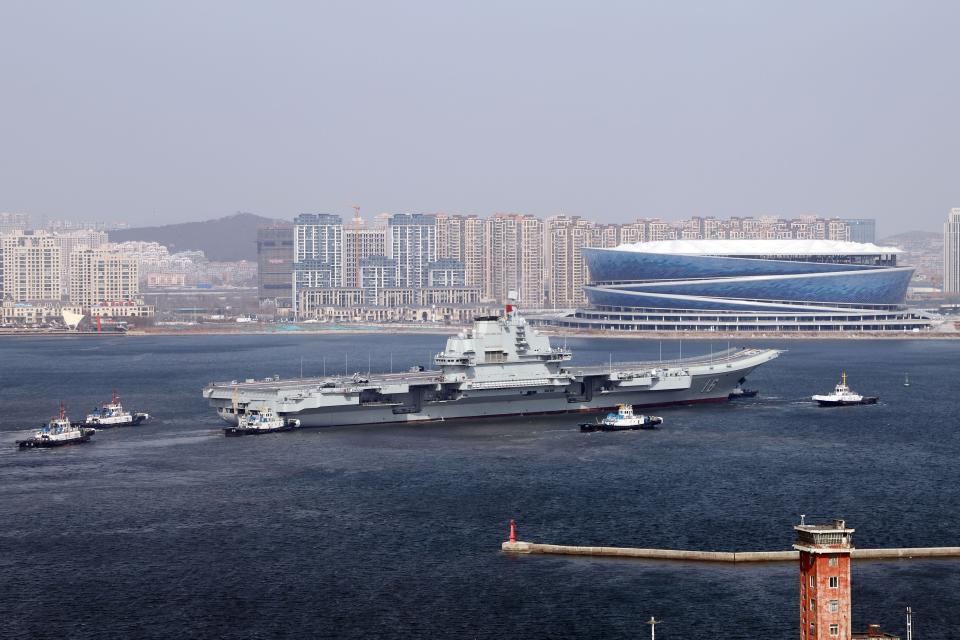
With construction beginning around 2017, Fujian is the third aircraft carrier China has built for the People's Liberation Army Navy (PLAN). The first two carriers, the Type 001-class Liaoning and Type 002-class Shandong, were commissioned in 2012 and 2017 respectively.
Liaoning and Shandong are both based on the Soviet-designed Kuznetsov-class. Liaoning itself was purchased as an incomplete hulk from Ukraine in 1998 for just $20 million under the pretense that it would be turned into a casino. It was instead towed to China and refitted for war.
Both carriers were slightly modified from their original Soviet design to incorporate modern tech and enable more space for aircraft. Liaoning and Shandong's flight decks both measure about 1,000 feet in length, and while Liaoning displaces around 60,000 tons, Shandong displaces around 66,000 tons.
Despite attempts at modernization, Liaoning's and Shandong's capabilities are limited by their employment of the short take-off, barrier-arrested recovery (STOBAR) system, which utilizes a ski-jump ramp at the bow to get jets airborne under their own power.
This imposes limits on the weight of the jets at take-off, as they need to be light enough to lift off the deck under their own engines. Consequently, force multipliers like airborne early warning aircraft and dedicated aerial refueling aircraft cannot operate from Liaoning and Shandong.
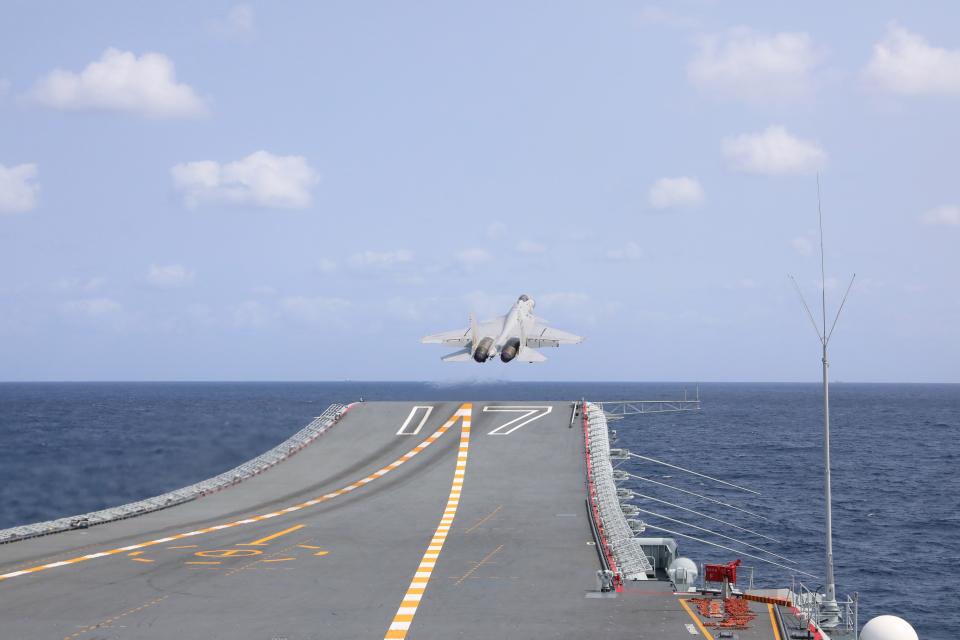
The air wings of the Liaoning and Shandong, which consist of 24 to 32 jets and 12 to 17 helicopters, respectively, are less than optimal for this setup, as the backbone of the wings, the J-15 fighter, is the heaviest carrier-borne aircraft in service. This means it has to carry a limited armament and fuel load, reducing its capabilities and combat range.
Because of these severe limitations, some observers have looked at Liaoning and Shandong less as battle-ready warships and more as training platforms from which China can gain experience with carrier production and operations as it prepares to field a more advanced and capable design.
China's latest carrier
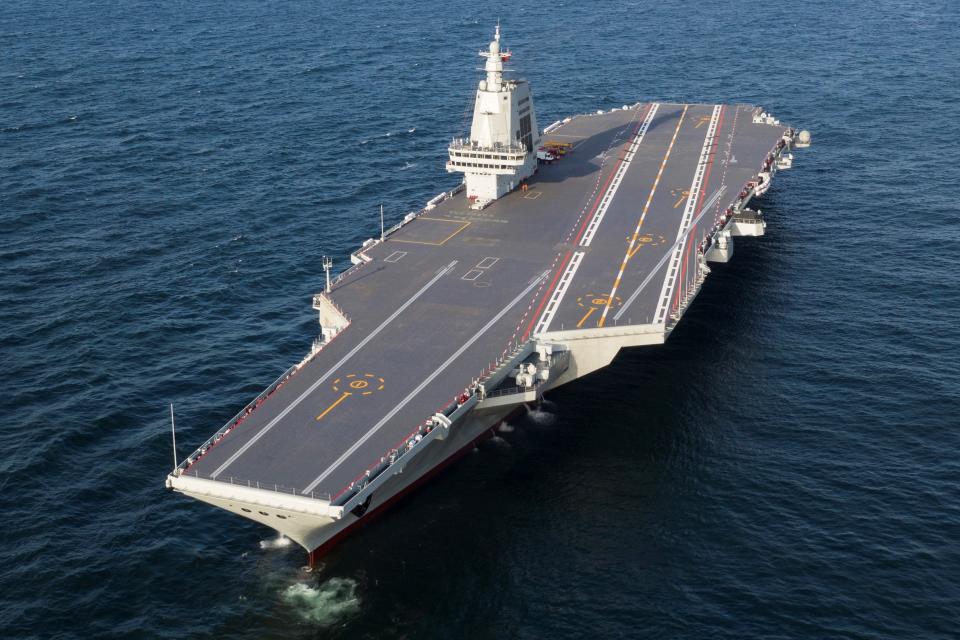
Fujian appears to be that more advanced and capable design.
Measuring 1,036 feet long and displacing over 80,000 tons, Fujian is larger than its predecessors. The most obvious advantage of its larger size is that it enables a larger airwing, which is believed to number approximately 60 aircraft.
The most important upgrade on Fujian, though, is its employment of a catapult-assisted take-off barrier arrested recovery (CATOBAR) system, which uses a catapult to launch an aircraft off a carrier's deck. While the CATOBAR system isn't new, Fujian is one of only two carriers in the world equipped with electromagnetic catapults (EMALS), the other being the new USS Gerald R. Ford.
An EMALS catapult enables Fujian to launch heavier aircraft than steam catapults, which means a more diverse air wing. China is currently developing a host of new carrier aircraft, including a catapult-launched variant of the J-15 known as the J-15S, a twin-seat electronic warfare variant known as the J-15D (similar to the EA-18 Growler), and a carrier-based airborne early warning and control (AEW&C) aircraft known as the KJ-600, which is almost identical in appearance to the US Navy's E-2 Hawkeye.
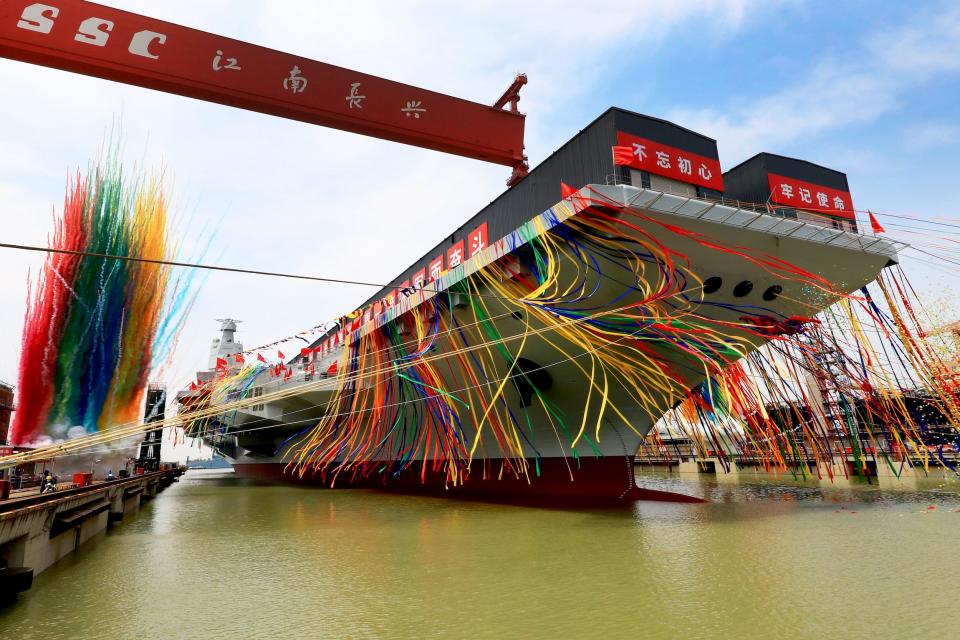
China is also in the process of developing a carrier variant of its unadopted J-35 stealth fighter for the PLAN.
With three catapults on its deck, Fujian will have a higher sortie generation rate than its predecessors, as it will be able to catapult multiple aircraft into the sky within seconds of each launch. By comparison, Liaoning and Shandong can only launch one aircraft at a time off their ski-jump bows.
Fujian's sea trial was meant to test the reliability and stability of its propulsion and electrical systems, according to the state-run Xinhua News Agency. The carrier has already passed its mooring trials and completed its outfitting, and reporting has suggested that the carrier will be commissioned in late 2025 or 2026.
Nimitz and Ford classes
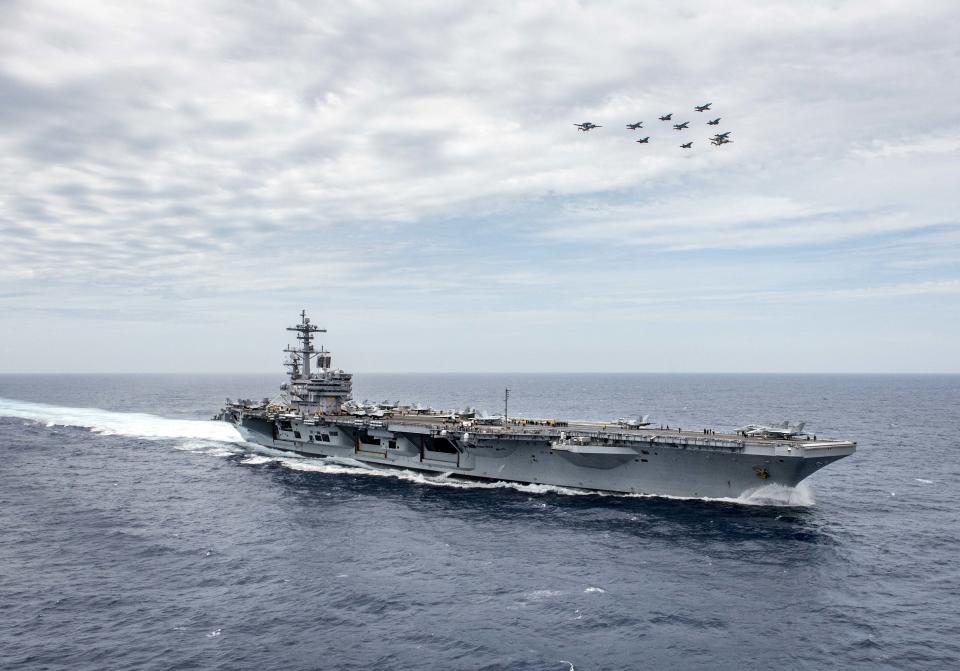
The US Navy's carrier fleet is currently made up of 11 carriers from two classes; the Nimitz-class, and the new Gerald R. Ford-class.
The 10 flattops of the Nimitz class hardly need an introduction. Built between 1968 and 2006 and in commission since 1975, each carrier measures 1,092 feet long and displaces some 97,000 tons. All are nuclear-powered, meaning their range is virtually unlimited — constrained only by crew comfort and provision stores.
Each ship is capable of carrying around 65 aircraft of varying types, including F/A-18 multirole fighters, EA-18G Growlers electronic warfare aircraft, E-2 AEW&C aircraft, C-2 Greyhound or MV-22 Osprey logistics/transport aircraft, and SH-60 helicopters.
All Nimitz-class carriers utilize the CATOBAR system and are equipped with four steam catapults. However, only a few of the 10 carriers are able to operate F-35Cs — the carrier-based variant of the F-35 only in service with the US Navy — as the F-35C requires retrofits to a carrier's maintenance spaces and weapons lockers.
In 2017, the US Navy commissioned the USS Gerald R. Ford, the flagship of the successor class to the Nimitz. At 1,106 feet long and with a displacement of 100,000 tons, Ford is the largest warship ever built.
It is also one of the most advanced, with 23 new technologies on board. This includes a new Dual Band Radar system, two newly designed A1B nuclear reactors (capable of generating almost three times more power than the reactors on the Nimitz class), and a new elevator system built and positioned for modern smart munitions.
The most impressive upgrades may be its four EMALS catapults, which, thanks to their use of linear induction motors, have enabled the Ford to have a 33% increased sortie generation rate compared to the Nimitz-class. This measures the total number of aircraft the carrier can launch for missions in a day.
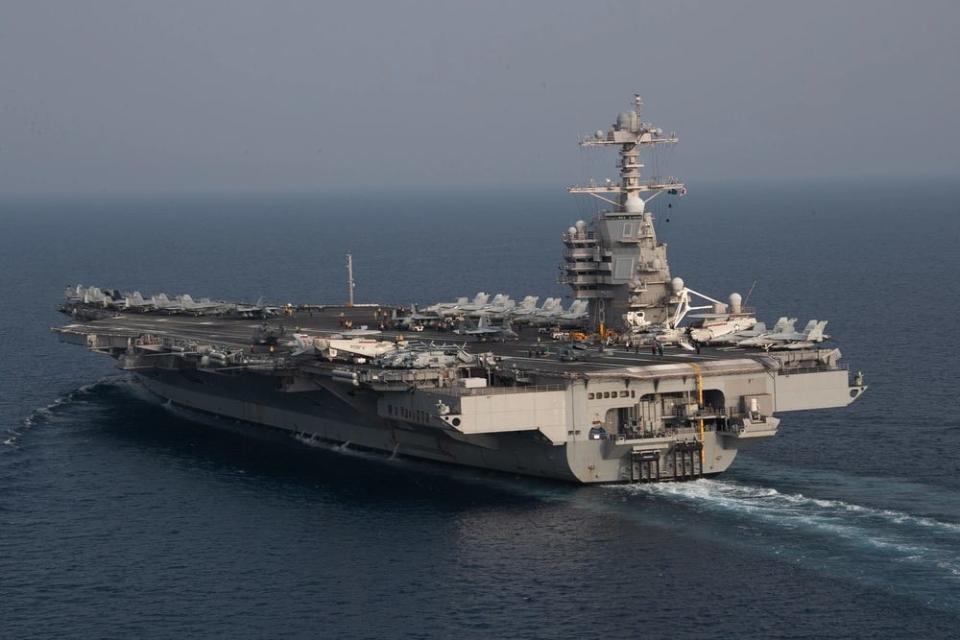
There is also the Advanced Arresting Gear (AAG), which, in addition to handling the weight of a wider variety of aircraft, is capable of self-diagnosing problems and sending maintenance alerts. Carrier aircraft snag a tensioned cable on the angle deck with their tailhooks, rapidly slowing the aircraft to a stop; those that miss must lift off and circle around for another try.
The sheer amount of new systems proved to a major headache for the Navy, as not all of them were functioning properly when the ship was launched. Consequently, the carrier didn't conduct its first deployment until 2022, five years after its commissioning.
Two more Ford-class carriers, USS John F. Kennedy and USS Enterprise, are under construction. The fourth, the future USS Doris Miller is on order, with its first cut of steel ceremony occurring in 2021.
At over 90% complete, Kennedy was originally expected to be delivered to the Navy in 2024, but is now planned to be delivered in 2025, whereupon it will join the Pacific Fleet. Enterprise's original delivery date of 2028 was likewise delayed to late 2029 or early 2030.
As Ford is unable to support the F-35C, Kennedy will be the first Ford-class vessel to have the stealth fighters as part of its air wing. Ford itself is scheduled to receive the modifications to be able to do so after an overhaul in fiscal year 2025.
How the flattops compare
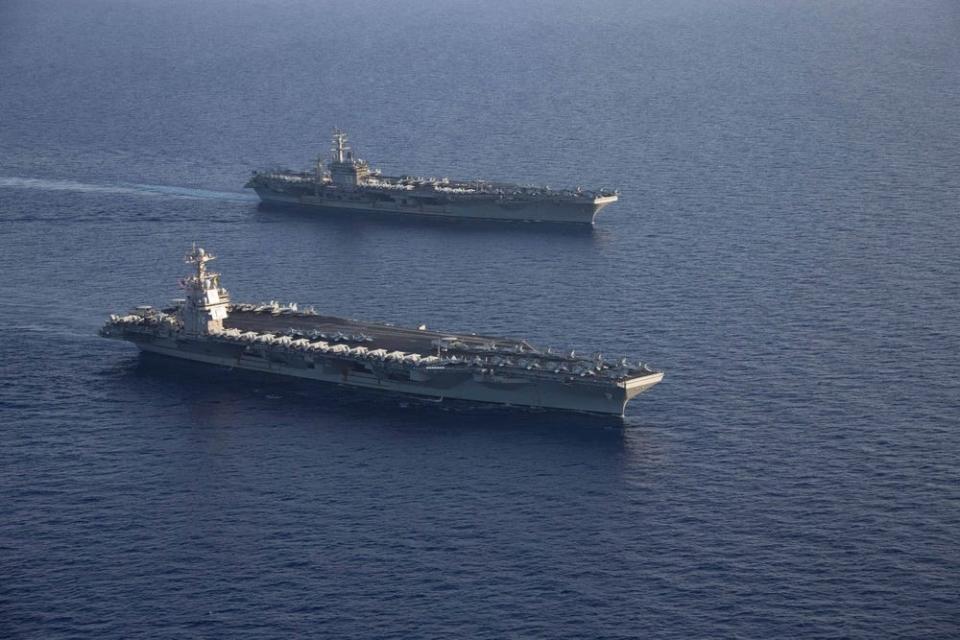
The speed and scale of the development of China's carrier fleet is astonishing, but its limitations are also important to note — especially when it is compared to the US Navy.
At just 11 years old, China's carrier fleet is still quite nascent compared to the US Navy, which commissioned its first carrier over a century ago. Consequently, the US Navy has a wealth of carrier experience, including seasoned personnel and a training pipeline to impart lessons to new generations of sailors and naval aviators.
In contrast, China has only a few years' worth of experience with carrier operations, has no historical or practical experience protecting carriers from anti-ship weaponry or enemy submarines, and has no experience operating naval AEW&C aircraft. Like its larger fleet, its carriers have no experience in combat.
The experience issue is also relevant when it comes to development.
China has no experience operating carrier catapults on its warships (though it did study carrier catapults when it purchased the decommissioned Australian carrier HMAS Melbourn from Canberra in 1985 under the guise of scrapping). Despite this, it has chosen to skip developing a steam catapult system in favor of an electromagnetic one. This is likely going to prove a difficult task; it took years to solve the problems with Ford's EMALS catapults, and since the US is the first and only other country that operates the novel system, China can't learn how to develop or operate such catapults from anyone else.
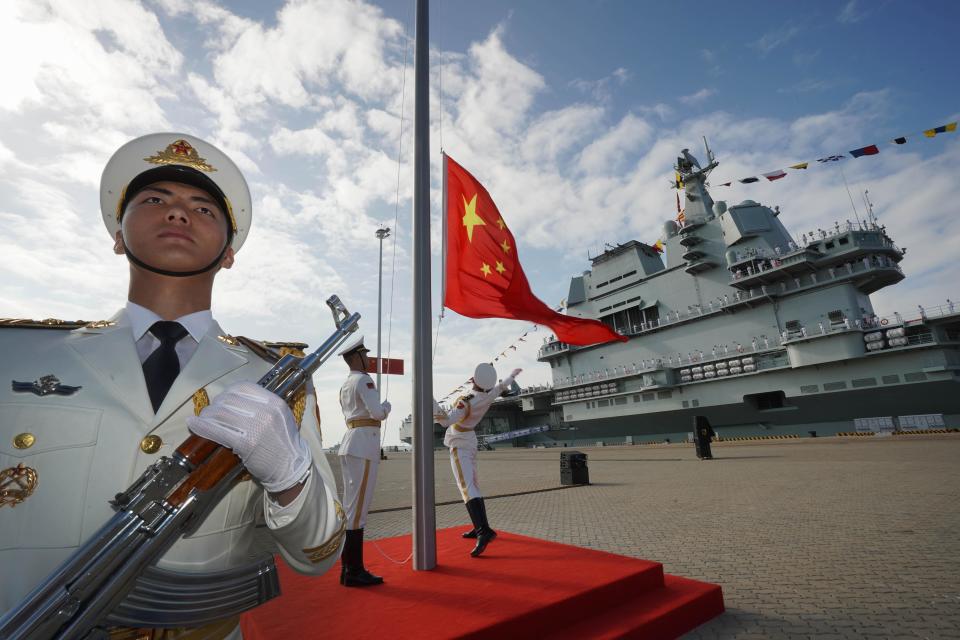
Another large limiting factor is the fact that all of China's carriers so far are conventionally powered, meaning their steam turbines are powered by fuel combustion. This means their ranges are much more limited as they will have to be refueled, something made more difficult by China's lack of a network of dedicated overseas naval bases like the US Navy's.
Chinese-controlled ports along the so-called "String of Pearls" may provide locations for Chinese carriers to refuel, but they are unlikely to be able to provide other kinds of necessary support like aircraft maintenance, and may also be unable to be defensive safe havens as dedicated military bases would, as they are more oriented towards civilian use. China does have a force of replenishment ships, but they would require escorts for protection.
The lack of nuclear reactors may also limit Fujian's sortie generation rate, as it is unknown how well its conventional steam turbines and diesel generators can generate the power for the EMALS catapults and the rest of the ship's systems.
"China is making progress, but it is slow and still lags the US considerably," Timothy Heath, a senior defense researcher at the RAND Corporation, told Business Insider. Heath noted in particular that China's carriers "rarely attempt to operate aircraft in blue water (outside the range of landing unrefueled aircraft to a divert airfield on land)" and that their overall sortie numbers are much smaller — about a dozen a day compared to 170 by the US.
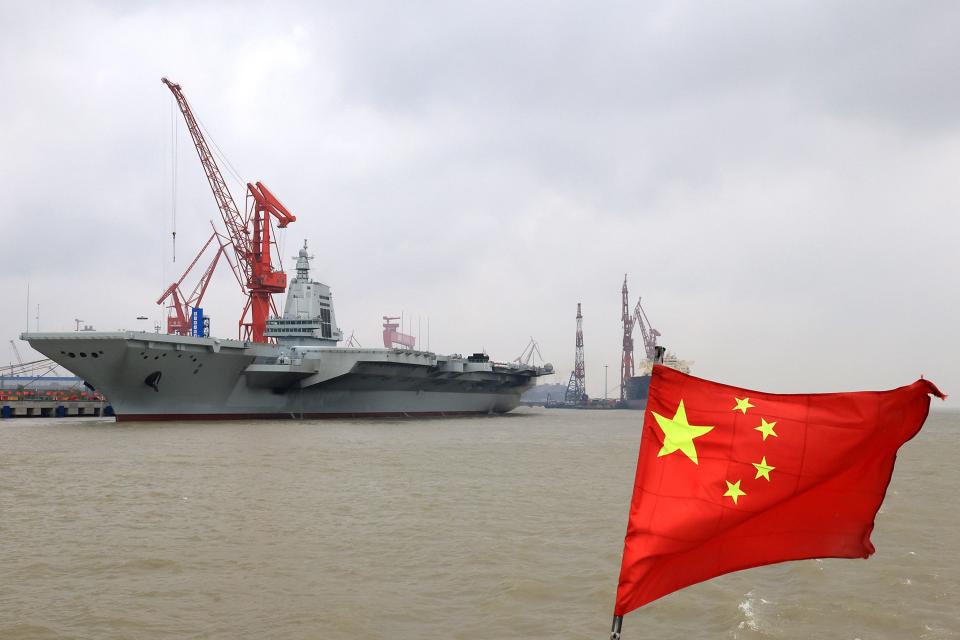
Nonetheless, Heath said the launching of the Fujian "shows clear ambitions to operate carriers at long range and this would overcome at least some of the issues of lack of bases and fuel."
China's continued investment in its carrier program, the progress it has made in naval aviation so far, and Fujian's size and sophistication indicate that China's commitment to a long-range and battle-ready carrier fleet is real and will only bear more results going forward.
"This will take years of practice and training to eventually overcome, but the Fujian gives China the ability to do so once they have mastered flight operations," Heath said.
China plans to build a fleet of six carriers by the year 2035. A fourth carrier, the first of the presumably named Type 004-class, is reportedly in development, though Chinese officials have been quiet on its details, including whether it will be nuclear-powered.
Benjamin Brimelow is a freelance journalist covering international military and defense issues. He holds a master's degree in Global Affairs with a concentration in international security from the Fletcher School of Law and Diplomacy. His work has appeared in Business Insider and the Modern War Institute at West Point.
Read the original article on Business Insider


